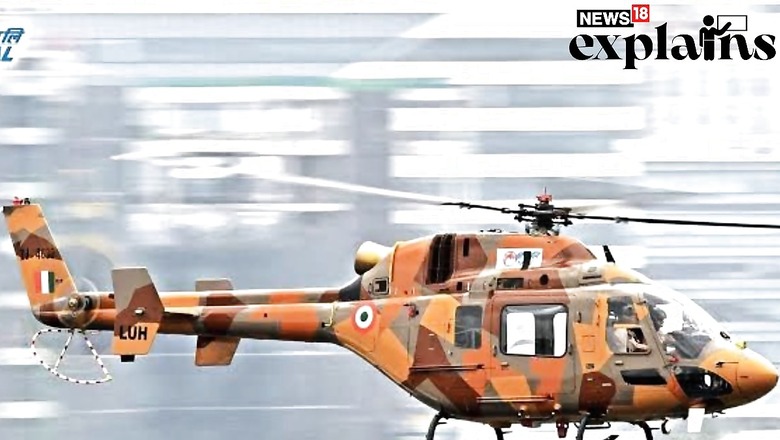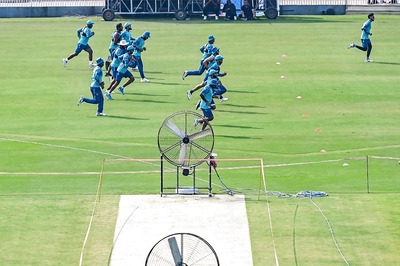
views
The Indian Army has started replacing its old Chetak and Cheetah helicopters with the indigenously-made Light Utility Helicopters (LUH) in the next 3-4 hours, multiple reports said. The entire fleet of old Chetak and Cheetah helicopters will be replaced in the next 10 to 12 years as the armed forces is looking forward to modernise its capabilities with new helicopters and UAVs.
The army is also looking to ramp up the fleet of Unmanned Aerial Vehicle (UAV) fleet in the next five years with a range of new UAVs including: Israeli Heron Mk 2 and Hermes Starliner.
In January this year, the Ministry of Defence gave the green light for the procurement of 12 LUH from state-run Hindustan Aeronautics Ltd (HAL). The Indian Army and Indian Air Force will get six units each this year.
During the ongoing #AeroIndia at #Bengaluru, Lieutenant General BS Raju #VCOAS flew in a Light Utility Helicopter #LUH. #VCOAS was also briefed about various features of the indigenous platform. #IndianArmy #AeroIndia pic.twitter.com/F3idsYf9ft— ADG PI – INDIAN ARMY (@adgpi) February 14, 2023
The Indian Army currently requires 250 light helicopters for reconnaissance and surveillance activities, according to The Indian Express.
Why is India Phasing Out Chetak and Cheetah helicopters?
Most of the Himalayas and the remote areas in the northeast have been served by Cheetahs and Chetaks, also manufactured by HAL. So far, HAL has produced more than 600 Cheetahs and Chetaks helicopters, while as of 2022, 415 choppers were still in service.
Currently, Cheetahs are the only helicopters that are operated at the Siachen glacier regularly with ease and there is no major issue with the chopper at present. However, the fleet of Cheetah helicopters, used for reconnaissance and surveillance, as well as transportation and medical evacuation, is nearing completion of their total technical life and a number of helicopter crashes in recent years.
The Chetak, a licensed version of the French Alouette III helicopter produced by HAL in India, was majorly utilized for transportation, reconnaissance, and search and rescue operations.
The design of the both the Cheetah and Chetak helicopters is around six decades old and their capability has been questioned after a series of mishaps in recent years, according to Hindustan Times.
Earlier in March, a Cheetah helicopter crashed in the mountains of Arunachal Pradesh killing two army pilots. So far, around 15 Cheetahs and Chetaks have crashed in the last decade.
All About HAL’s Light Utility Helicopter
The LUH is a three-ton class new generation single engine indigenously designed helicopter and can operate at 20,000 feet above sea level.
Though it has been designed and developed indigenously, the single-engine LUH is powered by the Ardiden 1U engine from Safran, the French aerospace major. The single Safran Ardiden 1U engine has seen big success and has been made to world standards.
The first prototype (PT1) flying of the helicopter was done in September 2016, while the second one (PT2) was done in May 2017, and the third prototype (PT3) was done in December 2018. The LUH can transport six passengers at a time and can fulfil multiple roles including transportation, troop movement, and civil operations.
The helicopter, having a glass cockpit and dual controls, can land in small helipads in high altitude stations like Siachen and Leh.
It can achieve a maximum speed of up to 240 km per hour and the maximum take of weight for the helicopter is 3,150 kg. However, it can only carry around 75 kg at the peak of its operational ceiling, while the Cheetah and Chetak can carry only 30 kg to 40 kg respectively.
The LUH’s cockpit features digital avionics and a modern instrumentation suite, while in Cheetah and Chetak, the pilot has to carry a physical map in his pocket. Hindustan Aeronautics Limited will be manufacturing around 200 helicopters to meet the operational requirements of Indian Army and Indian Air Force.



















Comments
0 comment